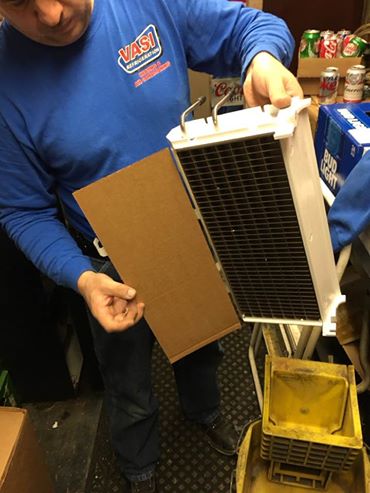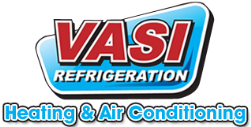The US Census Bureau estimates that between 2.5 – 3 million residential furnaces and air conditioners fail each year. While some of these units have served their homes faithfully for decades, others die within days or weeks of installation. Dealing with heating equipment that fails is often frustrating – homeowners may not know how to contact HVAC manufacturers, they aren’t familiar with their HVAC parts warranties, and they don’t know who in the HVAC Industry bears financial responsibility for repairs. If you are in the middle of a heating or cooling crisis: keep reading. This post can help you avoid common mistakes and get your equipment running again with a minimum of out-of-pocket cost.

Where to start
If your heating or cooling equipment has developed a problem within the first year of installation, contact the HVAC company who installed it. Most HVAC companies will cover both parts and labor for the first year following installation.
Not sure who the installing company is? If the homeowner who purchased the equipment submitted a product registration card with the name of their installer, the manufacturer may have entered that information in their database. A quick call to the manufacturer’s customer support line may help. If you just bought a new home, the builder should be able to tell you the installer. If those approaches fail, look at the unit itself — many contractors will leave a sticker on the unit with their contact information. If you can’t find the installing contractor or they’ve gone out of business, don’t panic. Your parts warranty remains valid as long as a licensed heating contractor does the work — however, you will need to pay labor costs out-of-pocket.
If your heating or cooling equipment was installed more than a year ago, you may still want to work with the installing contractor. There can be benefits for you and the contractor in having a long-term business relationship. However, you may prefer a fresh face or a second opinion. Before you schedule an appointment with a new contractor, get answers to the following warranty-related questions:
- Does the contractor charge a “warranty processing fee?” Some contractors bill homeowners a warranty processing charge to replace parts even when they are under warranty. This charge is in addition to the labor costs and is designed to compensate the contractor for the cost of handling the manufacturer’s warranty paperwork. This fee isn’t standard in the industry and may be negotiable — especially if you ask about it up-front.
- If your contractor bills you a flat fee for the appointment (rather than charging based on time and materials) ask how parts replaced under warranty affect the fee. Ideally, warrantied parts should be subtracted from the bill.
Your HVAC Parts Warranty
If this is the first problem with your heating equipment, read up on HVAC parts warranties first. Be aware of the following issues:
- Don’t assume that your heating contractor will check your warranty — find out from the manufacturer whether your equipment is still within the warranty period. Call the manufacturer’s customer support number with the model number, serial number, and (ideally) date of installation. Once you know whether your unit is under warranty, tell your contractor. Otherwise, you may pay full retail cost for a part that the contractor bought at the wholesale price — even though you should have gotten it for free.
- Keep receipts, invoices and documentation. If a problem turns out to be ongoing, and you need to escalate the situation with the manufacturer, these will be invaluable.
When to get a Second Opinion
If your contractor makes multiple service calls and is unsuccessful in resolving the problem, you may need a second opinion. Consider the following issues before you call in a second contractor.
- If your equipment is new and parts and labor are covered by the installing dealer, you may want to wait. Some dealers will void their labor warranty if you bring in another contractor. At a minimum, you will need to pay the new contractor’s labor costs. A better option may be to ask your contractor to contact the manufacturer’s technical field representative and get their input.
- Be patient – you may simply have a hard-to-diagnose problem. HVAC equipment is typically made from parts and components from many different manufacturers. Although it isn’t pleasant, it may take repeated attempts to solve the problem.
- If you are paying for repeated service calls out of pocket, and your contractor suggests an expensive repair (or replacement), you should consider getting an independent opinion. If the two opinions match, then you’re out an hour’s labor cost. But if they don’t, you may have saved yourself a bundle!
Much of this decision comes down to trust — do you believe that your contractor is competent and honest? If so, stick with them. If not, get more input.
How to Escalate a Problem with the Manufacturer
If you are experiencing multiple unsuccessful repair attempts on a relatively new machine, you may need to escalate the problem to the manufacturer. Reputable manufacturers, distributors and contractors all want you to be satisfied with your experience. If you are persistent, polite, and “squeaky,” and if the dispute involves a new unit with a serious, legitimate and intractable problem — they have been known to replace faulty units. However, although several manufacturers and distributors acknowledged that they have policies in place to replace faulty units, they made clear that replacement is an option of last resort, and they don’t consider it their responsibility to cover the labor costs of replacing those units.
Best practices for dealing with the manufacturer include:
- Stay in good communication with your installing dealer. When a problem recurs on a new unit, they should quickly involve the technical field rep. This person is your link to the manufacturer, and their input is important.
- If you aren’t getting results, contact the manufacturer directly. Start with the customer service number, and ask for the contact information of your local technical field rep. Call the field rep and ask them to get involved. You can also do this by mail — usa.gov has a good sample complaint letter.
- Don’t get discouraged and drop the ball — continue pushing for satisfactory resolution of the problem.
